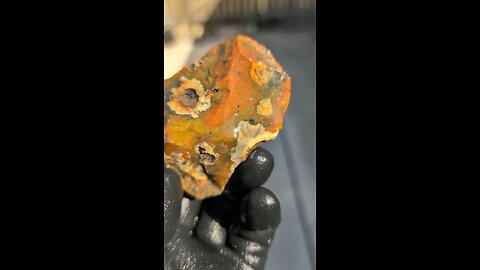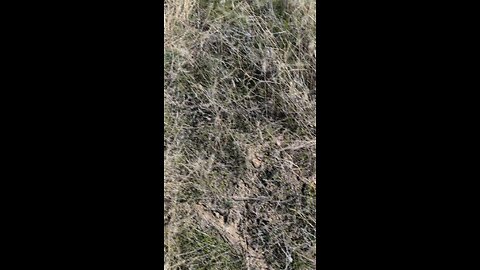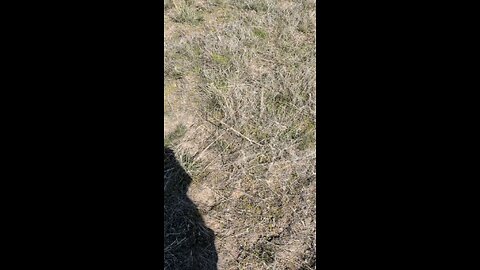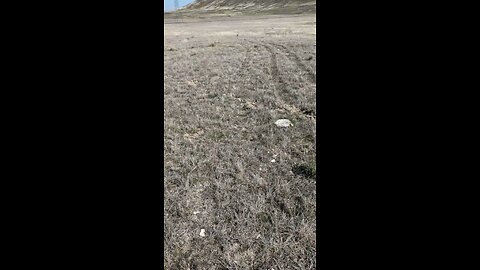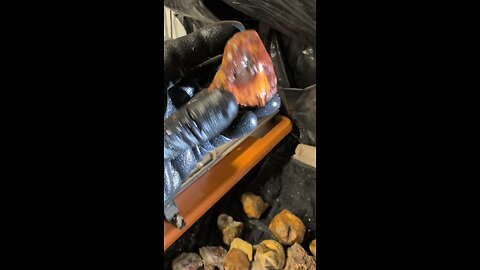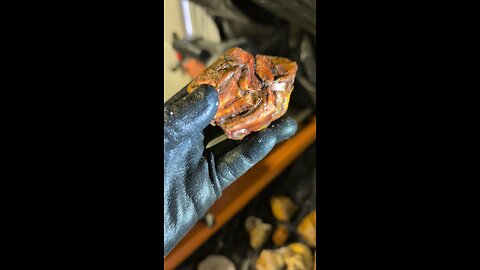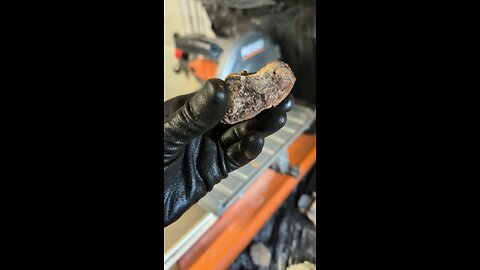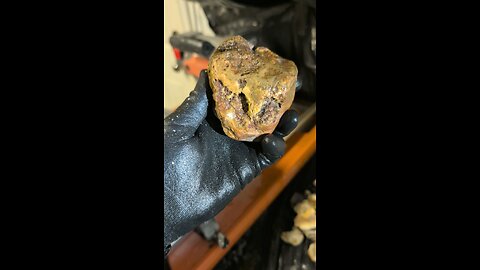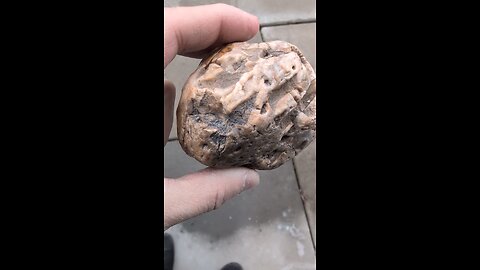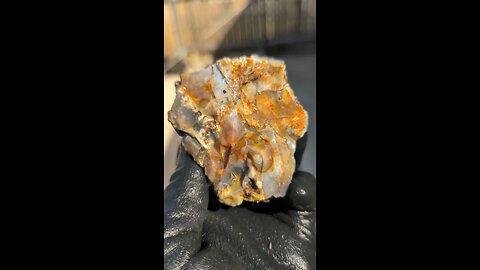
Jasper!
65 videos
Updated 5 months ago
Jasper is an opaque rock of virtually any color stemming from the mineral content of the original sediments or ash. Patterns arise during the consolidation process forming flow and depositional patterns in the original silica-rich sediment or volcanic ash. Hydrothermal circulation is generally thought to be required in the formation of jasper.
Jasper can be modified by the diffusion of minerals along discontinuities providing the appearance of vegetative growth, i.e., dendritic. The original materials are often fractured and/or distorted, after deposition, into diverse patterns, which are later filled in with other colorful minerals. Weathering, with time, will create intensely colored superficial rinds.
The classification and naming of jasper varieties presents a challenge.Terms attributed to various well-defined materials includes the geographic locality where it is found, sometimes quite restricted such as "Bruneau" (a canyon) and "Lahontan" (a lake), rivers and even individual mountains; many are fanciful, such as "forest fire" or "rainbow", while others are descriptive, such as "autumn" or "porcelain". A few are designated by the place of origin such as a brown Egyptian or red African.
Banded iron formations
Jasper is the main component in the silica-rich parts of banded iron formations (BIFs) which indicate low, but present, amounts of dissolved oxygen in the water such as during the Great Oxidation Event or snowball earths.The red bands are microcrystalline red chert, also called jasper.
Picture jaspers exhibit combinations of patterns resulting in what appear to be scenes or images, when seen on a cut section. Such patterns include banding from flow or depositional patterns (from water or wind), as well as dendritic or color variations. Diffusion from a center produces a distinctive orbicular appearance, i.e., leopard skin jasper or linear banding from a fracture as seen in liesegang jasper. Healed, fragmented rock produces brecciated (broken) jasper.
While these "picture jaspers" can be found all over the world, specific colors or patterns are unique to the geographic region from which they originate. One source of the stone is Indonesia, especially in Purbalingga district. From the US, Oregon's Biggs jasper and Idaho's Bruneau jasper from the Bruneau River canyon are particularly fine examples. Other examples can be seen at Ynys Llanddwyn in Wales.[17] A blue-green jasper occurs in a deposit at Ettutkan Mountain, Staryi Sibay, Bashkortostan, Russia. (The town of Sibay, in the far south of the Ural Mountains, near the border with Kazakhstan, is noted for its colossal, open-cast copper mine.)
-https://en.wikipedia.org/wiki/Jasper
-
Plume Agate with Brecciated Jasper!
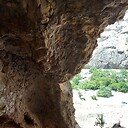 HumbleConservativePlume agate is a distinctive variety of agate, known for its unique and intricate patterns that resemble plumes, feathers, or even landscapes. Here are some key points about plume agate: Formation: Plume agate forms when silica-rich solutions seep into cavities in volcanic rocks. The "plumes" are created by manganese or iron oxides that get trapped in the silica, forming these feather-like patterns. Colors: The colors of plume agate can vary widely depending on the minerals present. Common colors include reds, browns, yellows, blacks, and whites, with the plumes often contrasting against the base color of the agate. Locations: Notable locations where plume agate is found include Oregon in the United States (specifically, the Owyhee Mountain area), Mexico, and Brazil. Each location can produce agates with unique characteristics. Uses: Plume agate is popular among collectors and is often used in jewelry like pendants, rings, and beads due to its aesthetic appeal. It's also valued in metaphysical communities, where it's believed to enhance one's connection to the Earth, promote creativity, and aid in grounding. Care: Like other agates, plume agate is relatively hard (about 6.5-7 on the Mohs scale), making it durable for jewelry. However, it should be protected from sharp blows or extreme temperature changes to avoid cracking. Identification: When identifying plume agate, look for the characteristic plume-like inclusions. These inclusions should appear as if they are floating within the stone, giving a 3D effect when viewed from different angles. Plume agate's beauty lies in its natural patterns, which can look like trees, clouds, or even abstract art, making each piece unique. Brecciated Jasper is a type of jasper that is characterized by its appearance as broken fragments or pieces of jasper that have been naturally cemented together. Here's a more detailed explanation: Formation: Brecciated Jasper forms when existing jasper is fractured or broken into pieces due to geological processes like tectonic activity or weathering. These fragments are then cemented together by silica or other minerals, often quartz, which fills the spaces between the fragments. Appearance: It typically has a distinctive, mosaic-like pattern where the jasper fragments are angular and vary in size, creating a visually striking contrast with the matrix that holds them together. The colors can range from red, brown, yellow, to white, depending on the impurities present in the jasper and the matrix material. Uses: Due to its unique and attractive pattern, Brecciated Jasper is commonly used in jewelry, carvings, and decorative items. It's valued for its aesthetic appeal and the interesting geological story it tells. Properties: Like other types of jasper, Brecciated Jasper is relatively hard (around 6.5 to 7 on the Mohs scale), making it durable for various uses. It also has a waxy to vitreous luster when polished. This type of jasper not only adds beauty to various crafts but also provides insight into the geological processes that have shaped our planet.26 views
HumbleConservativePlume agate is a distinctive variety of agate, known for its unique and intricate patterns that resemble plumes, feathers, or even landscapes. Here are some key points about plume agate: Formation: Plume agate forms when silica-rich solutions seep into cavities in volcanic rocks. The "plumes" are created by manganese or iron oxides that get trapped in the silica, forming these feather-like patterns. Colors: The colors of plume agate can vary widely depending on the minerals present. Common colors include reds, browns, yellows, blacks, and whites, with the plumes often contrasting against the base color of the agate. Locations: Notable locations where plume agate is found include Oregon in the United States (specifically, the Owyhee Mountain area), Mexico, and Brazil. Each location can produce agates with unique characteristics. Uses: Plume agate is popular among collectors and is often used in jewelry like pendants, rings, and beads due to its aesthetic appeal. It's also valued in metaphysical communities, where it's believed to enhance one's connection to the Earth, promote creativity, and aid in grounding. Care: Like other agates, plume agate is relatively hard (about 6.5-7 on the Mohs scale), making it durable for jewelry. However, it should be protected from sharp blows or extreme temperature changes to avoid cracking. Identification: When identifying plume agate, look for the characteristic plume-like inclusions. These inclusions should appear as if they are floating within the stone, giving a 3D effect when viewed from different angles. Plume agate's beauty lies in its natural patterns, which can look like trees, clouds, or even abstract art, making each piece unique. Brecciated Jasper is a type of jasper that is characterized by its appearance as broken fragments or pieces of jasper that have been naturally cemented together. Here's a more detailed explanation: Formation: Brecciated Jasper forms when existing jasper is fractured or broken into pieces due to geological processes like tectonic activity or weathering. These fragments are then cemented together by silica or other minerals, often quartz, which fills the spaces between the fragments. Appearance: It typically has a distinctive, mosaic-like pattern where the jasper fragments are angular and vary in size, creating a visually striking contrast with the matrix that holds them together. The colors can range from red, brown, yellow, to white, depending on the impurities present in the jasper and the matrix material. Uses: Due to its unique and attractive pattern, Brecciated Jasper is commonly used in jewelry, carvings, and decorative items. It's valued for its aesthetic appeal and the interesting geological story it tells. Properties: Like other types of jasper, Brecciated Jasper is relatively hard (around 6.5 to 7 on the Mohs scale), making it durable for various uses. It also has a waxy to vitreous luster when polished. This type of jasper not only adds beauty to various crafts but also provides insight into the geological processes that have shaped our planet.26 views -
Holy Jasper!
 HumbleConservativeJasper is a type of chalcedony, which is a microcrystalline variety of quartz. Specifically, jasper is known for its opaque appearance and often comes in various colors, primarily red, yellow, brown, or green, due to the presence of impurities like iron oxides or other minerals. Here are some key characteristics of jasper: Texture: Typically fine-grained with a smooth, sometimes waxy, surface. Hardness: On the Mohs scale, jasper ranks between 6.5 and 7, making it quite durable. Formation: Jasper forms in hydrothermal veins, volcanic rocks, or as sedimentary deposits. It can also occur in nodules or as a cementing material in conglomerates. Jasper often exhibits patterns or banding, which can be quite striking, leading to its use in jewelry, decorative items, and even in ancient artifacts for its beauty and durability. Varieties of jasper include: Picture Jasper: Known for its landscape-like patterns. Red Jasper: Often uniform in color, used for its deep red hue. Ocean Jasper: Characterized by orbicular patterns in various colors.29 views
HumbleConservativeJasper is a type of chalcedony, which is a microcrystalline variety of quartz. Specifically, jasper is known for its opaque appearance and often comes in various colors, primarily red, yellow, brown, or green, due to the presence of impurities like iron oxides or other minerals. Here are some key characteristics of jasper: Texture: Typically fine-grained with a smooth, sometimes waxy, surface. Hardness: On the Mohs scale, jasper ranks between 6.5 and 7, making it quite durable. Formation: Jasper forms in hydrothermal veins, volcanic rocks, or as sedimentary deposits. It can also occur in nodules or as a cementing material in conglomerates. Jasper often exhibits patterns or banding, which can be quite striking, leading to its use in jewelry, decorative items, and even in ancient artifacts for its beauty and durability. Varieties of jasper include: Picture Jasper: Known for its landscape-like patterns. Red Jasper: Often uniform in color, used for its deep red hue. Ocean Jasper: Characterized by orbicular patterns in various colors.29 views -
Rockhounding at The Graveyard!
 HumbleConservativeGraveyard Point in Idaho is a fascinating spot, especially if you’re into rockhounding or curious about unique natural and historical sites. It’s located in Owyhee County, near the Oregon-Idaho border, just a few miles west of Homedale, Idaho. The area is renowned for its rich deposits of plume agate, a type of chalcedony with feathery, plume-like inclusions, often found in seams within the local basalt rock. This makes it a popular destination for rock collectors looking to dig up or pick through surface “float” material for treasures like agates, jasper, or even petrified wood. The name "Graveyard Point" comes from a small pioneer cemetery perched on a hill, marked by a stone monument built in the early 1950s by rockhounds from the Northwest and California mineral societies. The monument lists five names—McConnell (1896), Thomas infant (1901), Mussell infant (1901), Jack Sparks (1914), and Old Uncle Billy Stull (no date)—though historical records suggest some graves might be missing or misnamed. It’s a bit of a haunting footnote to an otherwise rugged, desert landscape. Getting there can be tricky due to private property and “No Trespassing” signs, but there’s public land managed by the Bureau of Land Management (BLM) where collecting is allowed. A common route starts in Homedale: head west on Highway 19, turn onto Graveyard Point Road, and follow it about 4 miles to where it connects to public access points near Nielsen Lane (also called Sage Road). From there, a high-clearance 4WD vehicle is recommended as the dirt roads get rough, winding through sagebrush desert toward the collecting sites southwest of the cemetery. Coordinates like N 43°33.554' W 117°02.066' can guide you to the heart of the agate area. The terrain’s a mix of high desert and hills, with agate veins popping up every 10 yards or so across hundreds of acres. Some veins are a foot thick and stretch 30 feet long, filled with clear or colorful chalcedony—think blues, ambers, or grays—sometimes with black dendrites or angel wing formations. It’s been a rockhounding hotspot since the 1950s, and while there are active mining claims (like the Beverly Marie claim), plenty of free collecting spots remain if you steer clear of private land. If you’re planning a trip, bring tools like a shovel, geology pick, or chisel, and expect a remote vibe—camping’s an option, but there’s no fancy lodging nearby. Closest towns for a bed are Homedale or farther out, Nampa or Caldwell. Just respect the land, watch for private boundaries, and you’ll likely leave with some stunning finds and a story to tell.36 views
HumbleConservativeGraveyard Point in Idaho is a fascinating spot, especially if you’re into rockhounding or curious about unique natural and historical sites. It’s located in Owyhee County, near the Oregon-Idaho border, just a few miles west of Homedale, Idaho. The area is renowned for its rich deposits of plume agate, a type of chalcedony with feathery, plume-like inclusions, often found in seams within the local basalt rock. This makes it a popular destination for rock collectors looking to dig up or pick through surface “float” material for treasures like agates, jasper, or even petrified wood. The name "Graveyard Point" comes from a small pioneer cemetery perched on a hill, marked by a stone monument built in the early 1950s by rockhounds from the Northwest and California mineral societies. The monument lists five names—McConnell (1896), Thomas infant (1901), Mussell infant (1901), Jack Sparks (1914), and Old Uncle Billy Stull (no date)—though historical records suggest some graves might be missing or misnamed. It’s a bit of a haunting footnote to an otherwise rugged, desert landscape. Getting there can be tricky due to private property and “No Trespassing” signs, but there’s public land managed by the Bureau of Land Management (BLM) where collecting is allowed. A common route starts in Homedale: head west on Highway 19, turn onto Graveyard Point Road, and follow it about 4 miles to where it connects to public access points near Nielsen Lane (also called Sage Road). From there, a high-clearance 4WD vehicle is recommended as the dirt roads get rough, winding through sagebrush desert toward the collecting sites southwest of the cemetery. Coordinates like N 43°33.554' W 117°02.066' can guide you to the heart of the agate area. The terrain’s a mix of high desert and hills, with agate veins popping up every 10 yards or so across hundreds of acres. Some veins are a foot thick and stretch 30 feet long, filled with clear or colorful chalcedony—think blues, ambers, or grays—sometimes with black dendrites or angel wing formations. It’s been a rockhounding hotspot since the 1950s, and while there are active mining claims (like the Beverly Marie claim), plenty of free collecting spots remain if you steer clear of private land. If you’re planning a trip, bring tools like a shovel, geology pick, or chisel, and expect a remote vibe—camping’s an option, but there’s no fancy lodging nearby. Closest towns for a bed are Homedale or farther out, Nampa or Caldwell. Just respect the land, watch for private boundaries, and you’ll likely leave with some stunning finds and a story to tell.36 views -
Graveyard Point Rockhunt!
 HumbleConservativeGraveyard Point in Idaho is a fascinating spot, especially if you’re into rockhounding or curious about unique natural and historical sites. It’s located in Owyhee County, near the Oregon-Idaho border, just a few miles west of Homedale, Idaho. The area is renowned for its rich deposits of plume agate, a type of chalcedony with feathery, plume-like inclusions, often found in seams within the local basalt rock. This makes it a popular destination for rock collectors looking to dig up or pick through surface “float” material for treasures like agates, jasper, or even petrified wood. The name "Graveyard Point" comes from a small pioneer cemetery perched on a hill, marked by a stone monument built in the early 1950s by rockhounds from the Northwest and California mineral societies. The monument lists five names—McConnell (1896), Thomas infant (1901), Mussell infant (1901), Jack Sparks (1914), and Old Uncle Billy Stull (no date)—though historical records suggest some graves might be missing or misnamed. It’s a bit of a haunting footnote to an otherwise rugged, desert landscape. Getting there can be tricky due to private property and “No Trespassing” signs, but there’s public land managed by the Bureau of Land Management (BLM) where collecting is allowed. A common route starts in Homedale: head west on Highway 19, turn onto Graveyard Point Road, and follow it about 4 miles to where it connects to public access points near Nielsen Lane (also called Sage Road). From there, a high-clearance 4WD vehicle is recommended as the dirt roads get rough, winding through sagebrush desert toward the collecting sites southwest of the cemetery. Coordinates like N 43°33.554' W 117°02.066' can guide you to the heart of the agate area. The terrain’s a mix of high desert and hills, with agate veins popping up every 10 yards or so across hundreds of acres. Some veins are a foot thick and stretch 30 feet long, filled with clear or colorful chalcedony—think blues, ambers, or grays—sometimes with black dendrites or angel wing formations. It’s been a rockhounding hotspot since the 1950s, and while there are active mining claims (like the Beverly Marie claim), plenty of free collecting spots remain if you steer clear of private land. If you’re planning a trip, bring tools like a shovel, geology pick, or chisel, and expect a remote vibe—camping’s an option, but there’s no fancy lodging nearby. Closest towns for a bed are Homedale or farther out, Nampa or Caldwell. Just respect the land, watch for private boundaries, and you’ll likely leave with some stunning finds and a story to tell.42 views
HumbleConservativeGraveyard Point in Idaho is a fascinating spot, especially if you’re into rockhounding or curious about unique natural and historical sites. It’s located in Owyhee County, near the Oregon-Idaho border, just a few miles west of Homedale, Idaho. The area is renowned for its rich deposits of plume agate, a type of chalcedony with feathery, plume-like inclusions, often found in seams within the local basalt rock. This makes it a popular destination for rock collectors looking to dig up or pick through surface “float” material for treasures like agates, jasper, or even petrified wood. The name "Graveyard Point" comes from a small pioneer cemetery perched on a hill, marked by a stone monument built in the early 1950s by rockhounds from the Northwest and California mineral societies. The monument lists five names—McConnell (1896), Thomas infant (1901), Mussell infant (1901), Jack Sparks (1914), and Old Uncle Billy Stull (no date)—though historical records suggest some graves might be missing or misnamed. It’s a bit of a haunting footnote to an otherwise rugged, desert landscape. Getting there can be tricky due to private property and “No Trespassing” signs, but there’s public land managed by the Bureau of Land Management (BLM) where collecting is allowed. A common route starts in Homedale: head west on Highway 19, turn onto Graveyard Point Road, and follow it about 4 miles to where it connects to public access points near Nielsen Lane (also called Sage Road). From there, a high-clearance 4WD vehicle is recommended as the dirt roads get rough, winding through sagebrush desert toward the collecting sites southwest of the cemetery. Coordinates like N 43°33.554' W 117°02.066' can guide you to the heart of the agate area. The terrain’s a mix of high desert and hills, with agate veins popping up every 10 yards or so across hundreds of acres. Some veins are a foot thick and stretch 30 feet long, filled with clear or colorful chalcedony—think blues, ambers, or grays—sometimes with black dendrites or angel wing formations. It’s been a rockhounding hotspot since the 1950s, and while there are active mining claims (like the Beverly Marie claim), plenty of free collecting spots remain if you steer clear of private land. If you’re planning a trip, bring tools like a shovel, geology pick, or chisel, and expect a remote vibe—camping’s an option, but there’s no fancy lodging nearby. Closest towns for a bed are Homedale or farther out, Nampa or Caldwell. Just respect the land, watch for private boundaries, and you’ll likely leave with some stunning finds and a story to tell.42 views -
Beautiful day at The Graveyard!
 HumbleConservativeGraveyard Point in Idaho is a fascinating spot, especially if you’re into rockhounding or curious about unique natural and historical sites. It’s located in Owyhee County, near the Oregon-Idaho border, just a few miles west of Homedale, Idaho. The area is renowned for its rich deposits of plume agate, a type of chalcedony with feathery, plume-like inclusions, often found in seams within the local basalt rock. This makes it a popular destination for rock collectors looking to dig up or pick through surface “float” material for treasures like agates, jasper, or even petrified wood. The name "Graveyard Point" comes from a small pioneer cemetery perched on a hill, marked by a stone monument built in the early 1950s by rockhounds from the Northwest and California mineral societies. The monument lists five names—McConnell (1896), Thomas infant (1901), Mussell infant (1901), Jack Sparks (1914), and Old Uncle Billy Stull (no date)—though historical records suggest some graves might be missing or misnamed. It’s a bit of a haunting footnote to an otherwise rugged, desert landscape. Getting there can be tricky due to private property and “No Trespassing” signs, but there’s public land managed by the Bureau of Land Management (BLM) where collecting is allowed. A common route starts in Homedale: head west on Highway 19, turn onto Graveyard Point Road, and follow it about 4 miles to where it connects to public access points near Nielsen Lane (also called Sage Road). From there, a high-clearance 4WD vehicle is recommended as the dirt roads get rough, winding through sagebrush desert toward the collecting sites southwest of the cemetery. Coordinates like N 43°33.554' W 117°02.066' can guide you to the heart of the agate area. The terrain’s a mix of high desert and hills, with agate veins popping up every 10 yards or so across hundreds of acres. Some veins are a foot thick and stretch 30 feet long, filled with clear or colorful chalcedony—think blues, ambers, or grays—sometimes with black dendrites or angel wing formations. It’s been a rockhounding hotspot since the 1950s, and while there are active mining claims (like the Beverly Marie claim), plenty of free collecting spots remain if you steer clear of private land. If you’re planning a trip, bring tools like a shovel, geology pick, or chisel, and expect a remote vibe—camping’s an option, but there’s no fancy lodging nearby. Closest towns for a bed are Homedale or farther out, Nampa or Caldwell. Just respect the land, watch for private boundaries, and you’ll likely leave with some stunning finds and a story to tell.43 views
HumbleConservativeGraveyard Point in Idaho is a fascinating spot, especially if you’re into rockhounding or curious about unique natural and historical sites. It’s located in Owyhee County, near the Oregon-Idaho border, just a few miles west of Homedale, Idaho. The area is renowned for its rich deposits of plume agate, a type of chalcedony with feathery, plume-like inclusions, often found in seams within the local basalt rock. This makes it a popular destination for rock collectors looking to dig up or pick through surface “float” material for treasures like agates, jasper, or even petrified wood. The name "Graveyard Point" comes from a small pioneer cemetery perched on a hill, marked by a stone monument built in the early 1950s by rockhounds from the Northwest and California mineral societies. The monument lists five names—McConnell (1896), Thomas infant (1901), Mussell infant (1901), Jack Sparks (1914), and Old Uncle Billy Stull (no date)—though historical records suggest some graves might be missing or misnamed. It’s a bit of a haunting footnote to an otherwise rugged, desert landscape. Getting there can be tricky due to private property and “No Trespassing” signs, but there’s public land managed by the Bureau of Land Management (BLM) where collecting is allowed. A common route starts in Homedale: head west on Highway 19, turn onto Graveyard Point Road, and follow it about 4 miles to where it connects to public access points near Nielsen Lane (also called Sage Road). From there, a high-clearance 4WD vehicle is recommended as the dirt roads get rough, winding through sagebrush desert toward the collecting sites southwest of the cemetery. Coordinates like N 43°33.554' W 117°02.066' can guide you to the heart of the agate area. The terrain’s a mix of high desert and hills, with agate veins popping up every 10 yards or so across hundreds of acres. Some veins are a foot thick and stretch 30 feet long, filled with clear or colorful chalcedony—think blues, ambers, or grays—sometimes with black dendrites or angel wing formations. It’s been a rockhounding hotspot since the 1950s, and while there are active mining claims (like the Beverly Marie claim), plenty of free collecting spots remain if you steer clear of private land. If you’re planning a trip, bring tools like a shovel, geology pick, or chisel, and expect a remote vibe—camping’s an option, but there’s no fancy lodging nearby. Closest towns for a bed are Homedale or farther out, Nampa or Caldwell. Just respect the land, watch for private boundaries, and you’ll likely leave with some stunning finds and a story to tell.43 views -
Jasper nugget cut!
 HumbleConservativeJasper is a type of chalcedony, which is a microcrystalline variety of quartz. Specifically, jasper is known for its opaque appearance and often comes in various colors, primarily red, yellow, brown, or green, due to the presence of impurities like iron oxides or other minerals. Here are some key characteristics of jasper: Texture: Typically fine-grained with a smooth, sometimes waxy, surface. Hardness: On the Mohs scale, jasper ranks between 6.5 and 7, making it quite durable. Formation: Jasper forms in hydrothermal veins, volcanic rocks, or as sedimentary deposits. It can also occur in nodules or as a cementing material in conglomerates. Jasper often exhibits patterns or banding, which can be quite striking, leading to its use in jewelry, decorative items, and even in ancient artifacts for its beauty and durability. Varieties of jasper include: Picture Jasper: Known for its landscape-like patterns. Red Jasper: Often uniform in color, used for its deep red hue. Ocean Jasper: Characterized by orbicular patterns in various colors.57 views
HumbleConservativeJasper is a type of chalcedony, which is a microcrystalline variety of quartz. Specifically, jasper is known for its opaque appearance and often comes in various colors, primarily red, yellow, brown, or green, due to the presence of impurities like iron oxides or other minerals. Here are some key characteristics of jasper: Texture: Typically fine-grained with a smooth, sometimes waxy, surface. Hardness: On the Mohs scale, jasper ranks between 6.5 and 7, making it quite durable. Formation: Jasper forms in hydrothermal veins, volcanic rocks, or as sedimentary deposits. It can also occur in nodules or as a cementing material in conglomerates. Jasper often exhibits patterns or banding, which can be quite striking, leading to its use in jewelry, decorative items, and even in ancient artifacts for its beauty and durability. Varieties of jasper include: Picture Jasper: Known for its landscape-like patterns. Red Jasper: Often uniform in color, used for its deep red hue. Ocean Jasper: Characterized by orbicular patterns in various colors.57 views -
Beautiful!
 HumbleConservativeBased on the appearance of the rock in the image, it looks like a type of jasper, specifically a variety known as plume agate or plume jasper. This type of rock is characterized by its colorful, intricate patterns that often resemble plumes or feathers, which is evident in the red and green patterns seen in your rock. Jasper is a form of chalcedony, which is a cryptocrystalline form of silica, and it often contains inclusions of other minerals that give it its distinctive colors and patterns.75 views 1 comment
HumbleConservativeBased on the appearance of the rock in the image, it looks like a type of jasper, specifically a variety known as plume agate or plume jasper. This type of rock is characterized by its colorful, intricate patterns that often resemble plumes or feathers, which is evident in the red and green patterns seen in your rock. Jasper is a form of chalcedony, which is a cryptocrystalline form of silica, and it often contains inclusions of other minerals that give it its distinctive colors and patterns.75 views 1 comment -
Brecciated Jasper w/Chalcedony!
 HumbleConservativeBased on the image provided, the rock appears to be a type of jasper, specifically a brecciated jasper. Jasper is known for its rich, earthy colors and often contains patterns or inclusions. Brecciated jasper is characterized by its fragmented appearance, where pieces of jasper are cemented together with silica or other minerals, creating a mosaic-like pattern. This specimen shows a mix of red, brown, and some lighter inclusions, which is typical of jasper. Jasper is an opaque variety of chalcedony and is commonly found in various colors due to impurities like iron.50 views 1 comment
HumbleConservativeBased on the image provided, the rock appears to be a type of jasper, specifically a brecciated jasper. Jasper is known for its rich, earthy colors and often contains patterns or inclusions. Brecciated jasper is characterized by its fragmented appearance, where pieces of jasper are cemented together with silica or other minerals, creating a mosaic-like pattern. This specimen shows a mix of red, brown, and some lighter inclusions, which is typical of jasper. Jasper is an opaque variety of chalcedony and is commonly found in various colors due to impurities like iron.50 views 1 comment -
Jumpin' Jasper!
 HumbleConservativeBased on the image, the rock appears to be a type of jasper. Here are some reasons why: Coloration: Jasper often displays a variety of colors, including reds, yellows, browns, and greens, which match the hues seen in your rock. The presence of these colors suggests the inclusion of iron oxides or other minerals. Texture and Pattern: Jasper typically has a smooth, somewhat waxy luster when polished and can show banding or mottled patterns, which is evident in your specimen. The patterns in your rock look somewhat like flow patterns or layers, which is common in jasper due to its formation process. Composition: Jasper is an opaque, impure variety of silica, usually containing significant amounts of iron, which contributes to its color. The rock in the image has the appearance of being dense and fine-grained, typical of jasper. Jasper is often used in jewelry, carvings, and as a decorative stone due to its hardness and attractive patterns.35 views
HumbleConservativeBased on the image, the rock appears to be a type of jasper. Here are some reasons why: Coloration: Jasper often displays a variety of colors, including reds, yellows, browns, and greens, which match the hues seen in your rock. The presence of these colors suggests the inclusion of iron oxides or other minerals. Texture and Pattern: Jasper typically has a smooth, somewhat waxy luster when polished and can show banding or mottled patterns, which is evident in your specimen. The patterns in your rock look somewhat like flow patterns or layers, which is common in jasper due to its formation process. Composition: Jasper is an opaque, impure variety of silica, usually containing significant amounts of iron, which contributes to its color. The rock in the image has the appearance of being dense and fine-grained, typical of jasper. Jasper is often used in jewelry, carvings, and as a decorative stone due to its hardness and attractive patterns.35 views -
Brecciated Jasper!
 HumbleConservativeThe rock in the image appears to be Jasper, specifically a variety that's often called "Picture Jasper" or "Landscape Jasper" due to its interesting patterns. Here's why: * Appearance: The rock exhibits a wide range of earthy tones – yellows, browns, grays, and whites – swirled and banded together. This is characteristic of jasper. * Opacity: Jasper is typically an opaque rock, and the image shows that light doesn't transmit through it. * Texture: While we can't feel the texture from the image, jasper is usually fine-grained and smooth. * Patterns: The distinctive dendritic (branching) patterns and flow-like swirls are common in Picture Jasper. These patterns are often formed by mineral inclusions, such as iron oxides, during the rock's formation. Picture Jasper is a type of chalcedony (a microcrystalline quartz) that is known for its unique and often beautiful patterns. It's a popular material for cabochons, carvings, and jewelry. It's important to note: Identification based on an image alone isn't always definitive. A closer examination in person, including hardness tests and potentially looking at a fresh broken surface, would provide more certainty. However, Jasper, particularly Picture Jasper, is a very likely and accurate identification based on the visual evidence.45 views
HumbleConservativeThe rock in the image appears to be Jasper, specifically a variety that's often called "Picture Jasper" or "Landscape Jasper" due to its interesting patterns. Here's why: * Appearance: The rock exhibits a wide range of earthy tones – yellows, browns, grays, and whites – swirled and banded together. This is characteristic of jasper. * Opacity: Jasper is typically an opaque rock, and the image shows that light doesn't transmit through it. * Texture: While we can't feel the texture from the image, jasper is usually fine-grained and smooth. * Patterns: The distinctive dendritic (branching) patterns and flow-like swirls are common in Picture Jasper. These patterns are often formed by mineral inclusions, such as iron oxides, during the rock's formation. Picture Jasper is a type of chalcedony (a microcrystalline quartz) that is known for its unique and often beautiful patterns. It's a popular material for cabochons, carvings, and jewelry. It's important to note: Identification based on an image alone isn't always definitive. A closer examination in person, including hardness tests and potentially looking at a fresh broken surface, would provide more certainty. However, Jasper, particularly Picture Jasper, is a very likely and accurate identification based on the visual evidence.45 views
